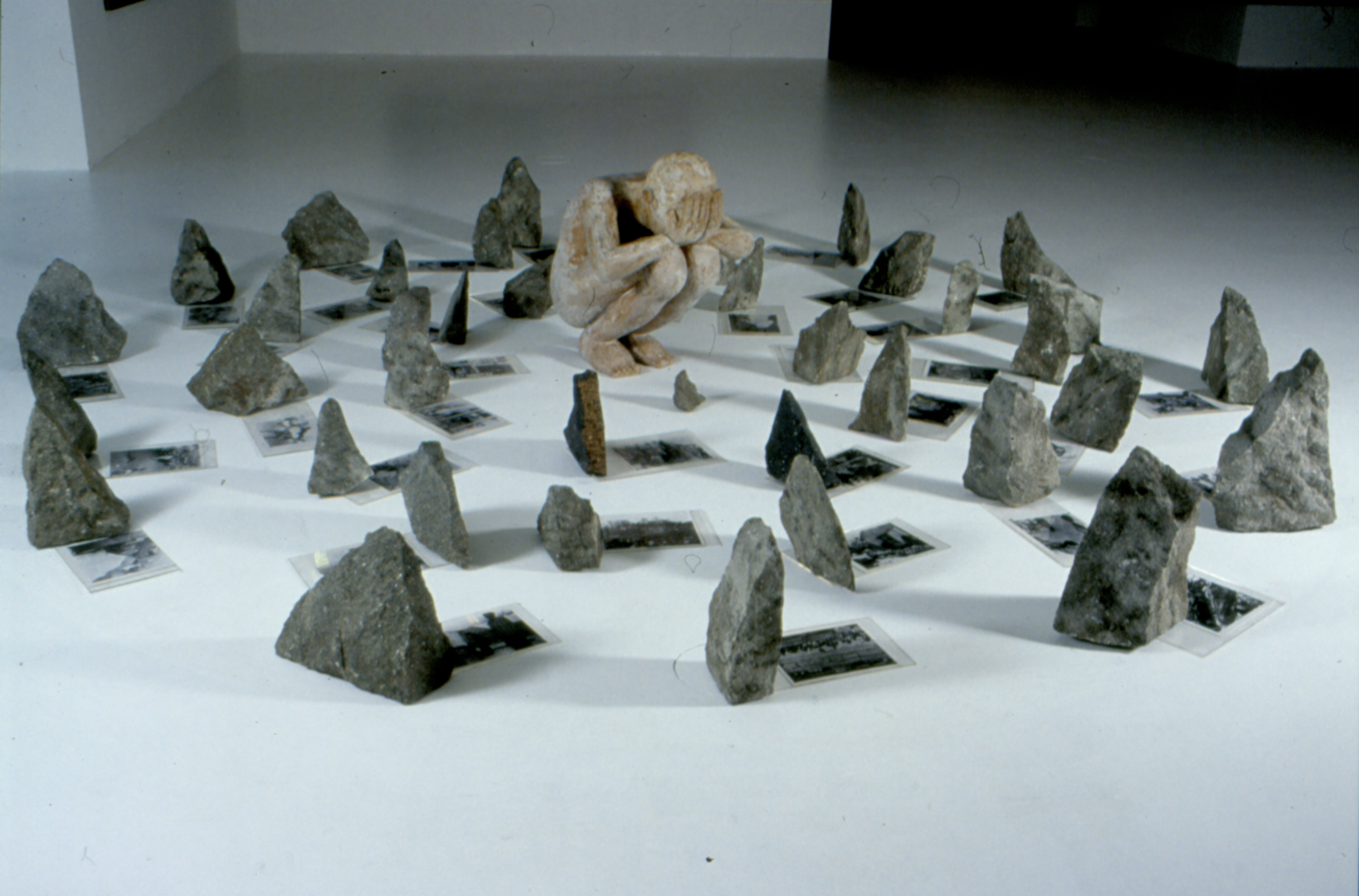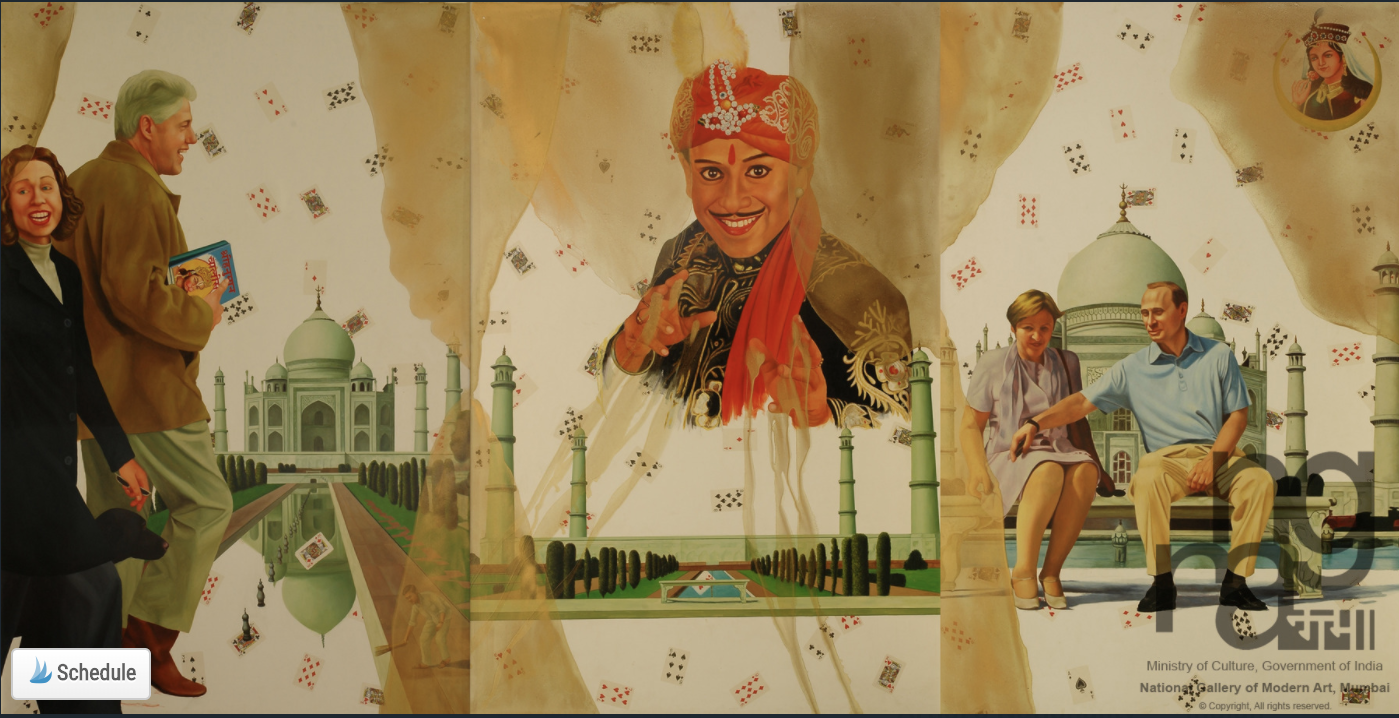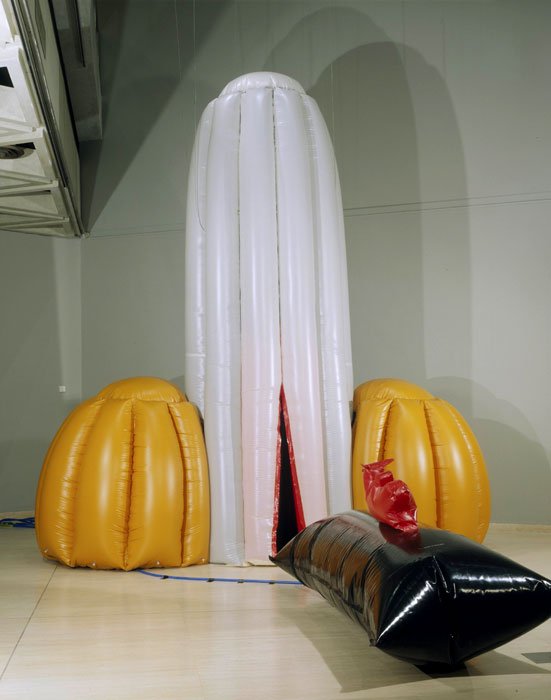This 2005 exhibition review has been re-posted to accompany the post about the Queens Museum of Art. The image featured above is “In America, 2005” by artists Naeem Mohaimen and Ibrahim Quraishi-Disappeared. This piece was included in the Fatal Love: South Asian American Art Now that the Queens Museum of Art mounted alongside Edge of Desire.
Edge of Desire: Recent Art in India – Asia Society and Museum and Queens Museum of Art (February 27 to June 5, 2005)
It has been a long time coming for New York City to host a large-scale exhibition of contemporary Indian art based on the abundance of South Asian populations throughout the five boroughs. Indian culture has certainly crossed over into the mainstream with countless restaurants serving spicy curries on almost every corner matched by the growth of yoga centers offering New Yorkers the potential for svelte bodies and spiritual awakenings. Jackson Heights, an epicenter of the South Asian community has become almost indistinguishable from Mumbai (renamed from Bombay in 1995)—or is it the other way around? Either way, the rich and diverse culture of India has certainly spiced up the melting pot of the U.S. in cities centers and beyond. It is only natural that two art institutions committed to South Asian contemporary art would welcome with open arms an exhibition that is made in India, by Indians and for Indians.

Organized by the Art Gallery of Western Australia and curator Chaitanya Sambrani, this exhibition was developed over the past several years. The curator, originally from India, spent months traveling around his homeland developing this project by meeting with leading artists, curators and critics. Their contributions encouraged this exhibition to include emerging to internationally renowned artists of several generations working in all types of media. This collaborative “insider” process presents an exhibition reluctant to generate an overarching “Indian” character or theme which is impossible in a country of such magnitude and diversity. The thirty-six artists and their eighty works of art, all created from 1990 through the present, have been grouped into nebulous categories such as “Location/Longing,” “Unruly Visions” (at the Asia Society), “Transient Self,” “Contested Terrain” and “Recycled Futures” (at the Queens Museum). These categories are curatorial tools used to organize an exhibition of this magnitude; however, Edge of Desire has the unruly character of a Whitney Biennial in that this exhibition presents a survey of the contemporary moment in India that the work easily deviates from such groupings.
The 1947 Partition of India and Pakistan, the successive struggle over Kashmir and events like the 1992 destruction of the Babri Masjid mosque in Adyodhya have resulted in tremendous bloodshed. The Muslim/Hindu tension and political instability of the subcontinent is inescapable and the subject chosen for several artists in this exhibition. N.N. Rimzon’s Speaking Stones, 1998, presents photographs of horrific events placed directly on the floor and held in place by large stones surrounding a crouching figure beaten down by the reality of India’s tumultuous and violent history. In Vivan Sundaram’s installation, the viewer encounters the corpse of a victim from the 1992 Babri event lying within a transparent tomb surrounded by encased photographs decorated with piles of nails also placed directly on the ground. Sonadhar Vishwakarma also responds to the 1992 event with a work crafted out of iron formed into miniature figures and shapes arranged along a sprouting armature creating a dazzling relationship with its shadow on the wall behind. Shilpa Gupta’s installation Blame, 2003, lines up small bottles filled with red blood-like liquid in shelves covering an entire wall literally recalling the bloodshed of religious warfare. Santosh Kumar Das’s and Nilima Sheikh chose traditional techniques and materials to also deal with similarly charged political subjects.

Edge of Desire is materially diverse with artists using methods of folk art or craft such as Swarna Chitrakar, Manu Chitrakar, Archana Hande, Raj Kumar, K.G. Subramany and Gulammohammed Sheikh existing within a culture that looks backward and forward at the same time. On the other hand, artists working painting, photography or installation are not reluctant to insert elements from their vivid visual environment ranging from flamboyant billboards to the bright colors associated with Hindu temples, imagery and rituals. The figural paintings of Atul Dodiya, Surendran Nair, Sudhir Patwardhan and Vasudha Thozur represent this hybrid characteristic of India’s material culture. Dodiya’s triptych juxtaposes the Taj Mahal with political leaders such as Bill Clinton and Vladimir Putin in two panels while depicting Indian illusionist P.C. Sorcar in the space where the monument has disappeared. Santosh Kumar Das’s black and white photographs also include an image of the Taj Mahal side by side with the Eiffel Tower. Das’s other photographs depicting older photographs of Indian leaders in situ can be compared to Nataraj Sharma’s Freedom Bus, 2001-2004, in which the heads of Indian leaders taught in elementary history text books fill the windows of a small bus, both works sharing a disappointment in the failures of government.
Mass media and production play a role in Ravi Kashi’s paper molds of television screens with image transfers of violence and sex demonstrating an indifference towards the human body in the general acceptance of images regularly splashed across television screens. Sharmila Samant made a saree out of Coca-Cola bottle caps dramatically suspended from the ceiling accompanied by definitions of “handmade,” “saree,” and “coke” on labels placed on the floor. Behind Samant’s saree, L.N. Tallur’s inflated phallus representing a temple stands erect with a tight slit intended as a doorway is a comical response to the “mania for temple building” while also bringing to mind India’s desire for nuclear arms in the eighties.

These examples illustrate Edge of Desire’s ability in presenting a cornucopia of contemporary Indian artists. However, while eavesdropping on other members of press during the preview, many were concerned that a lack in understanding the particulars of Indian culture made it difficult to understand some works. While others were hung up on the emphasis on representation and lack of abstraction concluding that there was a direct political message behind every work. These tidbits of conversation certainly added to the experience because it illuminated the cultural barriers that some are not willing to overlook. Critics and audiences may be intimidated by the idea of an entire exhibition dedicated to contemporary Indian artists while other may continue to avoid institutions such as the Asia Society because of its cultural specificity or the Queens Museum’s inconvenient location. Whatever the case may be, this reality leads one to assess that what may appear as a diverse array of work to someone like myself, it may seem too “Indian” and incomprehensible to too many others. Ethnic exhibitions are never flawless and always run the risk of being too culturally specific but they are currently the means in which our “de-centralized” art world operates in the development of token identities.
For more about family travel click here.
Click here if you are looking for a little guidance planning your next vacation.





